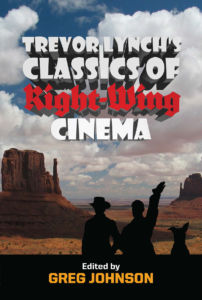Czech translation here
I finally got to a town with a movie theater and saw The Dark Knight Rises, the third and final film of Christopher Nolan’s epic Batman trilogy.
The Dark Knight Rises does not equal The Dark Knight — which was scarcely possible anyway — but it is a superb piece of film-making. It is a better film than Batman Begins and develops the characters and themes of both previous films into a tremendously satisfying and even moving conclusion.
Christian Bale, Gary Oldman, Michael Caine, Morgan Freeman, and Cillian Murphy reprise their roles from the earlier films. Michael Caine steals the scene whenever he appears on screen. New cast members include ravishing minx Anne Hathaway as the Cat Woman, the hulking, charismatic Tom Hardy as Batman’s nemesis Bane, Marion Cotillard as Miranda Tate/Talia, and Joseph Gordon-Leavitt (the least Jewish-looking Jew since William Shatner) as (Robin) John Blake.
Aside from Hans Zimmer’s insipid and forgettable score, this is a superbly made film, artistically and technically. It would be a shame if people did not see The Dark Knight Rises in theaters because of a madman’s shooting rampage on opening night in Aurora, Colorado. (Many of the audience members in Aurora demonstrated, by the way, that heroism is not just for the movies.) You need to see this film on the big screen. Lightning doesn’t strike twice, right?
Although I will discuss isolated elements of the plot, including the epilogue, I will say only this about the plot as a whole: The League of Shadows returns to destroy Gotham and Batman returns to stop them. What I wish to focus upon are the larger themes of the movie, particularly those that run through the whole trilogy. The continuities between Batman Begins and The Dark Knight Rises are easy to see, since the League of Shadows is Batman’s opponent in both movies. The continuities between The Dark Knight and the rest of the series are not so obvious, but they are deep and important.
1. Traditionalism
In Batman Begins, the young Bruce Wayne is rescued from a brutal prison in the Himalayan kingdom of Bhutan by Henri Ducard a.k.a. Ra’s al Ghul (Arabic for head of the demon, played by Liam Neeson), a member of the League of Shadows, a secret brotherhood of warrior-initiates whose headquarters is somewhere high in the Himalayas.
The League of Shadows believes in the Traditional view of history. History moves in cycles, and its trajectory is decline. A historical cycle begins with a Golden Age or Age of Truth (Satya Yuga) in which mankind lives in harmony with the cosmic order. As mankind falls away from truth, however, society declines through Silver and Bronze Ages to the fourth and final age: the Iron or Dark Age (Kali Yuga), which dissolves of its own corruptions, after which a new Golden Age will arise.
The purpose of the League of Shadows is to hasten the end of the Dark Age and the dawn of the next Golden Age. Thus when a civilization is falling, they appear to give it a final push into the void: Rome, Constantinople, and now Gotham. And in every case, these are not mere cities, but cities that stand for entire civilizations. Thus the League of Shadows is here to destroy nothing less than the whole modern world.
In Batman Begins, the League of Shadows trains Bruce Wayne as an initiate, but he rebels before his final test and flees back to Gotham, where he reinvents himself as Batman. The League, however, follows him to Gotham to destroy the city, which is ripe with corruption and decadence. Batman defeats them and kills Ra’s al Ghul, but in The Dark Knight Rises, the League of Shadows returns under new leadership to finish the job.
2. “Do you wanna know how I got these scars?”
When the League of Shadows finds Bruce Wayne, he is a young man almost at the end of a road to self-destruction. Wayne is destroying himself due to his inability to deal with the scars of his past. His primal traumas include seeing his parents murdered by a mugger, as well as an inordinate fear of bats.
In addition to rigorous physical training, the League of Shadows also involves spiritual initiation. One such exercise involves the use of a hallucinogen derived from a Himalayan flower to confront and overcome one’s deepest fears.
Another exercise is to transcend the world’s ruling morality — the egalitarian notion that all human beings have some sort of intrinsic value — by killing a man. We are told he is a murderer and deserving of death. But Wayne thinks that even a murderer has value and thus deserves more than mere summary justice. He has rights to due process. So Wayne balks at this test and ends up killing quite a few members of the League of Shadows in the process. But he has no trouble with that, because they are “bad” people who don’t believe in due process and the American way.
When Bruce Wayne returns to Gotham, he is an incomplete initiate. He has overcome the traumas of his past, giving him superhuman courage. His training in martial arts has given him superhuman abilities. But he has not rejected egalitarian humanism. He still subjects himself to the conventional morality. He is, in short, a superhero: a superhuman being who lives to serve his inferiors out of a sentimental sense of humanity.
Now this might not be such a bad thing, if the people he served actually looked up to him and honored him as their superior. But they are egalitarians too, thus they resent their superiors, even if they are their benefactors.
In The Dark Knight, the Joker is a portrait of a fully achieved Übermensch. (Remember that Hollywood only allows superior men to appear as monsters, because to people today, they are monsters.) Like Batman, the Joker has overcome the scars of his past — literal scars, in the case of the Joker. When the Joker tells people how he got his hideous facial scars, he spins a new story each time. As James O’Meara brilliantly suggested, this shows that the Joker has overcome his past. He tells different stories because, to him, it does not matter how he got his scars. He has transcended them — and, as we shall see, everything else in his past.
Unlike Batman, however, the Joker has also gone beyond egalitarian humanism. He is psychologically free from his past and morally free from the yoke of serving his inferiors. As I argued in my essay on The Dark Knight, the Joker’s crimes need to be seen as moral experiments to break down Batman’s commitment to egalitarian humanism.
The Joker has all the traits of a fully realized initiate, but he doesn’t exactly seem to be a team player. But of course we don’t know how the Joker came to be the way he is, because that is part of the past he has transcended.
In The Dark Knight Rises, eight years have passed since the death of Harvey Dent/Two-Face. Batman’s final act of self-sacrifice for the city of Gotham was to accept responsibility for Two-Face’s crimes in order to preserve Harvey Dent as a symbol of incorruptible commitment to justice. Batman has disappeared, but Gotham’s organized crime problem has been solved by the Dent Act, which provides for indefinite detention of criminals.
The lie has, however, taken its toll on its architects: Bruce Wayne and Commissioner Gordon. Commissioner Gordon has lost his wife and family and dreams of exposing Dent and retiring. Bruce Wayne has hung up his Batman costume and lives in seclusion in Wayne Manor, in mourning for Rachel Dawes, who he thought was waiting for him even though she had chosen to marry Harvey Dent. Wayne Enterprises is in a shambles, defaulting on its obligations to its shareholders and the public at large.
In short, Bruce Wayne has returned to his state at the beginning of Batman Begins: he is destroying himself because he cannot deal with the traumas of his past, and he is dragging everyone else down with him. Wayne is not just psychologically crippled; he is also physically crippled, walking with a cane.
When the League of Shadows returns, however, Wayne gets a leg brace, dusts off his Batman costume, and goes out to fight them. But Alfred warns him that despite his technological crutches, he is spiritually and physically incapable of beating Bane, who fights with the strength of belief, the strength of an initiate in the League of Shadows. And Bruce Wayne is no longer an initiate.
Alfred is right. When Bane and Batman finally clash, Bane trounces Batman, twisting his spine and then casting him into a vast pit in some god-forsaken place in Central Asia. The pit is a prison. It is open to the surface, which adds to the torment of the prisoners, who can see the world above but cannot reach it. Only one person has ever managed to climb out. Many others have died trying.
In the darkness, Wayne has to physically and spiritually rebuild himself. It is a recapitulation of his original initiation with the League of Shadows. It also recapitulates the initiation of one of his opponents, who was born in the pit and eventually climbed out as a child. Wayne masters his fear again and escapes, rising from darkness to light, the cave to the real world: perennial symbols of spiritual initiation. In this case, however, Wayne masters fear not by suppressing it but by using it. By dispensing with the safety of the rope, he reactivates his fear and uses it as motive power to make the final leap.
Having been effectively re-initiated by the League of Shadows, Wayne is now able to fight and defeat them. The message could not be clearer: technology cannot make us superhuman without the underlying spiritual preparation of initiation.
3. Initiation and Superhumanism
What is the connection between Nietzschean superhumanism, which is emphasized in The Dark Knight, and Traditionalist initiation, which is emphasized in the other two films?
I understand Traditionalism ultimately in terms of the nondualistic interpretation of Vedanta: the height of initiation is the mystical experience of the individual soul’s identity with Being, the active principle of the universe. In our ordinary human consciousness, we experience ourselves as finite beings conditioned by other finite beings, including our traumas; these are our scars. When we experience our identity with Being, however, our finite bodies are infused with its active, creative, infinite power: the source of all things. This gives the initiate the power to overcome his merely finite, conditioned self, as well as other finite beings. Thus Traditionalists have their own supermen: the yogic adepts who attain magical powers (siddhis) through consciously experiencing their identity with Being.
Being is one, thus it is beyond all dualities, including the duality of good and evil. Thus the initiate who achieves mystical unity with Being rises beyond good and evil. He also rises beyond egalitarianism, since there is a fundamental difference between the initiated and the uninitiated. Finally, he rises above humanism, since he realizes that individual humans have no intrinsic worth or being. We are merely roles that Being plays for a while, masks that Being assumes and then discards. And if the initiate’s role in the cosmic play is to nix millions of these nullities, what’s the harm in that? Being itself cannot die, and its creative power is infinite, so there’s always more where they came from.
In sum, on the nondualist Vedantic model, the culmination of initiation in a mystical experience of the identity of the self with Being leads to: (1) the infusion of superhuman powers, (2) the overcoming of external conditions, including one’s past, (3) a view of the world beyond all dualities, including good and evil, and (4) the overcoming of egalitarian humanism.
Batman and the Joker display some of these traits, although nothing close to the essentially magical powers ascribed to yogic adepts. Batman, of course, never goes beyond good and evil, beyond egalitarian humanism. And the Joker, who has achieved moral liberation, does not display any superpowers, although he is remarkably accomplished.
4. “Nothing in his pockets but knives and lint.”
When the Joker is arrested in The Dark Knight, Commissioner Gordon is flummoxed: they don’t know who he is. They can find no DNA, fingerprint, or dental records. They don’t know his name or date of birth. His clothes are custom made, with no labels. As Gordon says, “There’s nothing in his pockets but knives and lint.”
If the would-be superman sometimes strives to overcome and forget his past, modern society means to keep us all tied to our pasts by compiling records. Of course mere bookkeeping cannot stop the inner spiritual transformation by which man becomes superman, rising above the conditioning of his past. But we are dealing with materialists here. Your karmic records are meaningless to them. But your tax returns and internet traffic are not.
In The Dark Knight Rises, Selina Kyle (Cat Woman) is searching for a computer program called Clean Slate that will delete her from all existing computer records, allowing her to completely escape from her past. She craves the Joker’s freedom. Batman offers to give her the program in exchange for her help. In the end, both she and Bruce Wayne seem to have used it to escape their pasts and start a new life together in Italy.
Of course, deleting all records of one’s past is not the same thing as overcoming the past psychologically and existentially. That is possible only through a fundamental transformation of one’s being. But once that transformation is in place, the technology sure can be useful.
5. “All you care about is money.”
Contempt for money is another theme common to The Dark Knight and The Dark Knight Rises. In The Dark Knight, the Joker demonstrates his contempt for money by burning his share of a vast fortune.
In The Dark Knight Rises, some of Bane’s best lines deal with money. His two most spectacular public attacks are on the stock exchange and a football game (as Gregory Hood put it so memorably: the bread and circuses of the decadent American empire).
In the stock exchange, one of the traders speaks to Bane as if he were a common criminal, and a moronic one at that: “We have no money here to steal.” To which Bane replies, “Then why are you here?”
When Bane breaks a deal with a businessman who has outlived his usefulness, the businessman protests that he has paid Bane a small fortune. “And that gives you power over me?” Bane asks.
Most commentators are somewhat confused about Bane’s attitude toward money, because he leads a Communist-style insurrection against the rich. But there are two critical perspectives one can take on money. Figuratively speaking, one can view it from above or from below.
Those who criticize money from below are those who lack it and want it. Their primary motive is envy, which is not necessarily wrong. A hungry man has good reason to envy your bread. And he has good reason to hate you if you prefer to waste it rather than to share it. The people who criticize money from below actually have a lot in common with the people they envy: all they care about is money, either getting it or keeping it.
Bane, however, criticizes money from above. His perspective is aristocratic, not egalitarian. He is an initiate, a spiritual warrior against decadence. He realizes there is something higher than money, and he feels contempt for those who are ruled by it, for those who think that money is the highest power in this world. He is, to use the Joker’s phrase, “a better class of criminal.”
Like the Joker, Bane is free of material concerns even as he masterfully manipulates the base, material world to fight for higher, spiritual aims. Like the Joker, Bane is not above using people who are only interested in money to further his spiritual aims. Thus Bane both makes deals with the rich and incites the envious mob to rise against them, all to hasten the destruction of Gotham.
6. The Good Little People of Gotham
In The Dark Knight, the Joker argues that the people of Gotham are only as good as the world allows them to be, and when the chips are down, “they’ll eat each other.” This sounds like a terrible insult, but from the Joker’s perspective it is actually a form of optimism. Being willing to eat one another is a sign of animal vitality unrestrained by egalitarian humanist slave morality. The Joker claims that he is not a monster; he is just “ahead of the curve”: meaning that he is already what the rest of Gotham would be if only they were “allowed” by society (or courageous enough to go there without society’s permission).
The Joker rigs two boats to explode and gives the detonators to the people in the other boats. He tells them that if they blow up the other boat, he will let them live. If neither boat is destroyed by midnight, he will blow up both of them. One boat is filled with criminals and cops. The other is filled with the good little people of Gotham. In the end, however, neither group manages to blow up the other, and Batman prevents the Joker from destroying both.
Batman draws the false conclusion that the boats were filled with people who believe in goodness, whereas in fact they were merely too craven, decadent, and devitalized to do anything “bad,” even to save their own lives. The Joker, it turns out, was a lot farther ahead of the curve than he thought.
In The Dark Knight Rises, Bane proves the Joker’s point, but he shows that it will take nothing less than a revolutionary mob before the people of Gotham find the courage to eat each other, beginning with the rich. The revolutionary mob gives people permission to act atavistically. But beyond that, they have moral permission as well because, in the end, egalitarian altruism really is a kind of cannibal ethics.
The least convincing part of The Dark Knight Rises is the portrayal of the police as improbably idealistic and self-sacrificing. In The Dark Knight, the police force consists almost entirely of corrupt, gun-toting bureaucrats counting the days until their pensions kick in. In The Dark Knight Rises, Bane lures 3000 police into the tunnels under Gotham and traps them there. When they finally break out, they charge en masse into battle armed only with their side arms against Bane’s heavily-armed fighters. I don’t deny that it is possible to awaken such idealism, even in the most cynical public servant. But I needed to see some reason for such a dramatic transformation, perhaps something analogous to Bruce Wayne’s transformation in his own underground prison.
Cat Woman is motivated primarily by envy of the rich, but the revolution in Gotham has left her thoroughly disgusted. She tells Batman that as soon as she finds a way out, she is leaving. She does, however, linger for personal reasons: she wants to save Batman too. She urges him to follow, telling him that he has given everything for these people. He replies “Not everything, not yet.” Then he apparently commits suicide to save the city. But in the end, we learn that Bruce Wayne was not willing to give his life for Gotham. But he was willing to give up Gotham and Batman for a life of his own.
The ending is enigmatic, but as I read it, Bruce Wayne has finally arrived at a higher level of initiation. Again, he has triumphed over his past, this time entirely, and he has used Clean Slate to erase all traces of his life and Cat Woman’s. He has also risen above egalitarian humanism. He no longer lives for his inferiors. He lives for himself, and he has found happiness with Cat Woman, which is an interesting change, since it means he has decided to put his happiness above the mere fact that she is a wanted criminal.
Of course, in my eyes, the fact that Bruce Wayne has apparently chosen a private life makes him inferior to Bane. Yes, Wayne has ceased to serve those who are beneath him, but merely serving oneself is inferior to serving a cause that is greater than oneself, which is what Bane did.
7. Truth or Consequences
One of the most important new themes introduced in The Dark Knight Rises is the destructiveness of lies. Gordon and Wayne are both debilitated by the burden of the lies they told to protect the reputation of Harvey Dent. Wayne is also crushed by the loss of Rachel Dawes, which is made all the more painful because Alfred chose to conceal the fact that she had chosen to leave Bruce Wayne for Harvey Dent. Finally, near the end of the movie, Robin Blake lies to a group of orphans to give them hope, even though there really wasn’t any. The common denominator is that all these lies are told altruistically, to protect people, and particularly “the people,” from the truth. Lies are particularly necessary in statecraft, even at its highest and most disinterested. Lies are, of course, a form of bondage to society and the past. Thus they must be rejected by those who would be free, although the initiates seem quite willing to employ deception and violence for a higher cause.
8. The Left as the Vanguard of Nihilism
The Dark Knight Rises is an extremely Right wing, authoritarian, fascistic movie.
First of all, in this movie, both the good guys (Wayne, Gordon) and the bad guys (the League of Shadows) are united in their belief that Gotham is corrupt and decadent. In the earlier films, the good guys clearly believed that progress was possible. Now they are just looking for excuses to retire, because society no longer has anything to offer them. They have given without reward until their idealism has been extinguished and their souls have been completely emptied. They have become burned out shells in thankless service to their inferiors.
Second, Nolan’s portrayal of the Left is utterly unsympathetic: Leftist values are shown to be nihilistic. Thus promoting Leftism is a perfect tool for those who would destroy a society. That’s not just true in the movies.
Third, and most trivially, the uncritical portrayal of the police would surely score high on the authoritarian personality inventory, although White Nationalists are not so naïve.
* * *
The Dark Knight Rises is a remarkable movie, a fitting conclusion to a highly entertaining and deeply serious and thought-provoking trilogy. As unlikely as it may seem, these films touch upon — and vividly illustrate — issues that are at the heart of the New Right/Radical Traditionalist critique of modernity. Tens of millions of young whites are eagerly watching and analyzing these films. Thus it is important for us to use these films to communicate our ideas.
Yes, Hollywood always puts our ideas in the mouths of psychotics in order to immunize people against them. But these ideas are one reason why the villains are always more interesting than Batman, who merely comes off as a tool.
I have suggested that these movies incorporate elements from Radical Traditionalism and Nietzschean superhumanism to generate maximum dramatic tension. What conflict could be more fundamental than the one between those who wish to destroy the world and those who wish to save it? That said, I cannot help wondering if Christopher and Jonathan Nolan also feel some sympathy for these ideas, although of course they would deny it. Whatever their ultimately sympathies, though, there is no question that somebody in Hollywood knows which ideas offer the most fundamental critique of the modern world. Isn’t it time for White Nationalists to learn them as well?












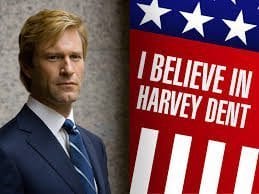

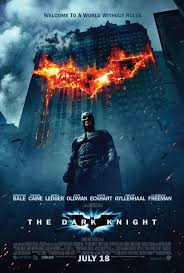

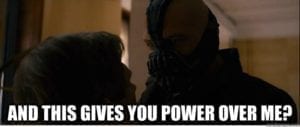










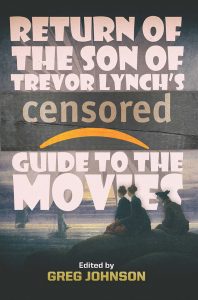
 1,170 words
1,170 words



